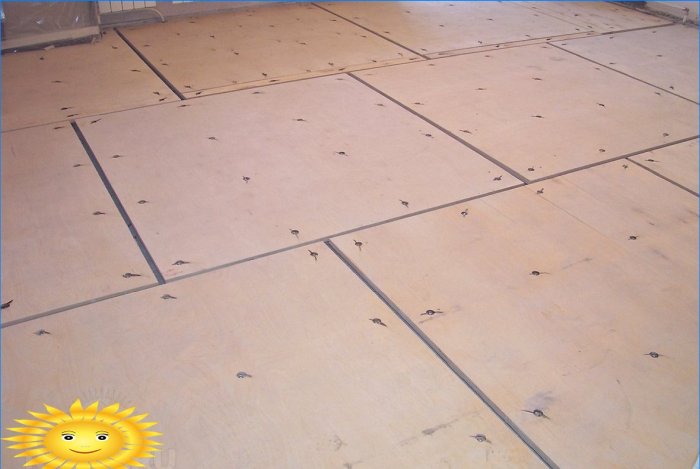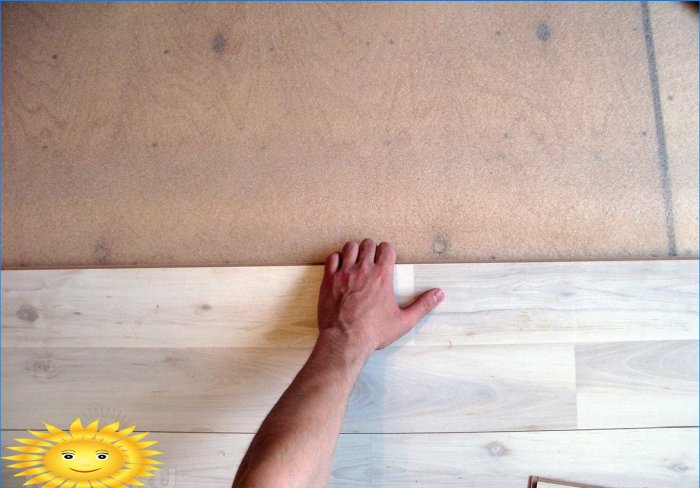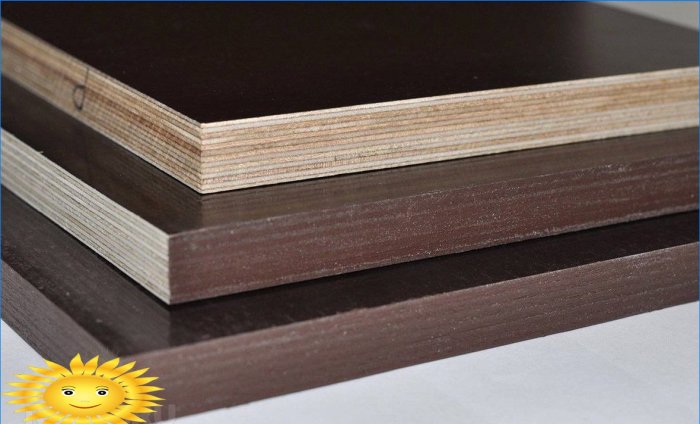Plywood as a finishing or rough floor covering has a number of advantages – an affordable price, simplicity and speed of installation, the ability to paint. Our tips site will find out which plywood can be used for leveling the floor and directly as flooring.
With regard to the classes and features of the use of plywood in construction and decoration in our country, GOST 3916.1 is in force since 1996, which has not lost its relevance. According to this document, there are the following categories of plywood sheets:
- E is the perfect plywood, without deformations and imperfections, an elite class.
- I – there may be minor violations and cracks on the sheet with a length of no more than 20 millimeters.
- II – there may be small but noticeable wood inserts, cracks longer than 20 millimeters.
- III – for one square meter of such plywood there can be up to 10 wormholes and a maximum of 9 defects, the cross-section of which does not exceed 6 millimeters.
- IV – low-quality products with numerous defects, intergrown knots, wormholes up to 45 millimeters in diameter.
Important! If plywood is used to level the floor before laying laminate on a substrate, linoleum, parquet, then you can use sheets of class II and III, they are cheaper and are quite suitable for this purpose. And if plywood will serve as the finishing of the floor, then you need to use a decorative option, to which the portal has already devoted an article. This plywood is exclusively class I and E.
For bathroom and kitchen flooring, choose moisture resistant plywood. In addition, it is worth paying attention to grooved sheets that have groove-toothed connections. They are easier to install, no need for nails and screws, you can repair individual sections of the floor. Separately stands out laminated plywood, which is absolutely not afraid of moisture and looks more attractive.
There are the following grades of plywood:
- FBA – environmentally friendly, but only for dry rooms.
- FSF – contains formaldehyde, therefore it is used most often in the industrial field, not suitable for living rooms.
- FC – contains urea glue. Safe, durable, used in the manufacture of furniture. Suitable for the floor too.
- FB – the use of bakelite-based varnish in the production gives such plywood excellent water-repellent properties. Suitable for use in kitchens and workshops.
- BS – in this case, bakelite-based glue is used. This is plywood for boats and airplanes. Durable, yet bends well.
- BV – also bakelite plywood, strong, but with less ability to repel water.
For the subfloor, choose plywood with a thickness of at least 12 millimeters so that the base is solid. If laying is done on logs, then the thickness of the plywood should be increased to at least 18 millimeters, because there are voids at the bottom and the floor can bend under the weight. The sizes of sheets can be different, the standard is 157×152.5 centimeters. If necessary, plywood is not so difficult to cut, you can work with it in different ways.
When choosing plywood for arranging flooring, you need to be guided by the following principles:
- For living rooms, choose exclusively environmentally friendly and safe materials without formaldehyde, for example, the FK brand.
- Choose the appropriate thickness and dimensions, guided by the characteristics of the room.
- The moisture content of the veneer must not exceed 15%.
- Be sure to check with the manufacturer for the availability of quality certificates.
- Remember that you can save on rough finishing by choosing sheets of class II and III, but not on finishing.
Choosing plywood for the floor
Plywood is becoming an increasingly popular choice for flooring due to its affordability and ease of installation. It is also exceptionally durable and can be treated with protective finishes to make it waterproof and scratch-resistant. Additionally, plywood is widely available in a variety of thicknesses, grains, and designs, making it easy to find the perfect option for any space. Whether you are updating an existing room or starting from scratch, plywood is an excellent choice for flooring.
Renovation and finishing






What factors should I consider when choosing plywood for the floor?
When choosing plywood for the floor, there are several factors to consider. Firstly, consider the thickness of the plywood. Thicker plywood tends to be more durable and can withstand heavy foot traffic. Secondly, check the grade of the plywood. Grades range from A to D, with A being the highest quality. Choose a grade that suits your needs and budget. Additionally, consider the type of plywood. There are various types available, such as softwood, hardwood, marine-grade, or pressure-treated plywood. Choose one that is suitable for the environment and level of moisture in your space. Lastly, consider the finish of the plywood. Some varieties come prefinished, which can save you time and effort. Ultimately, assess your requirements in terms of durability, aesthetics, and budget to select the most appropriate plywood for your flooring project.